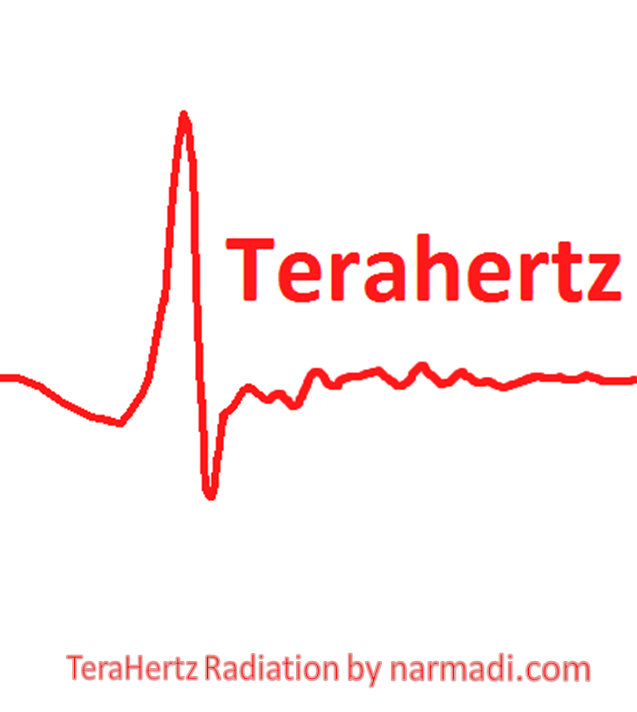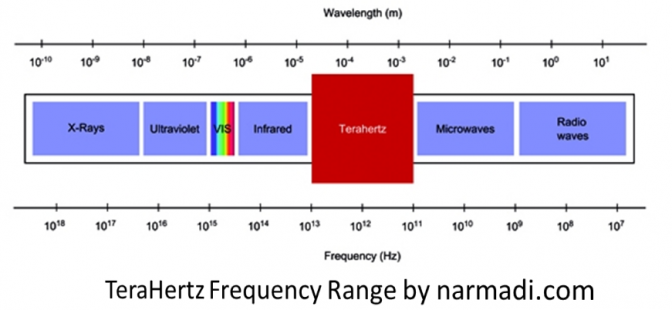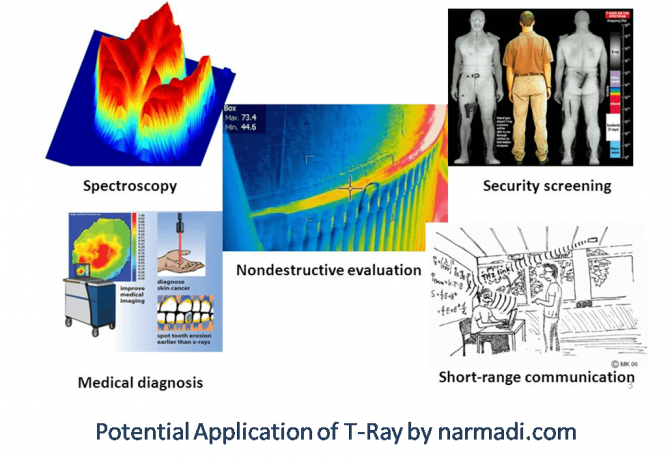Terahertz radiation, narmadi.com. Nowadays, wireless technology development has reached its culmination point. A lot of new inventories and breakthrough about around it have been founded.
In the very recent times for example, we’ve been introduced to the WiGig. This is the new kind of wireless that could transfer gigabytes of files instantly.
Or, you may just heard about WiFi Miracast, a kind of WiFi technology that allows you to display what’s on your personal device. So, something displayed on your smartphone and Tablet can be displayed to bigger monitor such as TV, wirelessly.
And now, even before these technologies are fully spread and understood by most of the society, here we go again with the new kind of wireless technology: TeraHertz Radiation.
What is TeraHertz Radiation?

TeraHertz Radiation, or usually called T-Ray is specific frequency that is found in a gap between infrared and microwaves. Unlike the spectrum of visible light that has 400-700 THz of range, the T-Ray is only measured between 1 and 10 THz.
That’s why even if the frequency is quite high, the spectrum of it is still invisible. With these kinds of characteristics, sometimes people also call this Terahertz Radiation as tremendously high frequency, submillimeter radiation, T-Lux, T-waves, Terahertz, THz, or T-light.
Talking further about T-Ray’s characteristic, this network is classified as non-ionizing radiation which travels within a line of sight. Further, this radiation is also penetrative, but less penetrative than microwave.
However, it can penetrate to some materials such as clothing, cardboard, masonry, wood, paper, ceramics, or plastics.
But, this radiation can’t penetrate to some other materials such as liquid and metal, while on clouds and fog, the penetration is very limited. More than that, scientist also believes that T-Ray can be used to replace X-Ray due to its ability to penetrate in the body tissue. Well, that’s interesting.
Then, what is the interesting thing about this TeraHertz Radiation? In our context, the interesting thing about TereHertz is surely on its transmission rate. Even though there are many other possible benefits of T-Ray, but transmission rate is the one that attracts so much attention.

Especially with the new emergence of 5G technology, high level of transmission rate will be really needed as a companion of the newest generation of cellular network.
If the 5G network will have 10 until 20 Gbps of speed, the T-Ray is expected to have 100 times higher transmission rate compared to the today’s network speed. According to scientist, it could be 100 Gbps.
The Emerging Issues
Uncharted territory is a big issue of using TeraHertz Radiation. Even though some scientist from Tokyo Institute of Technology claimed that they are already success, there’s still other issue occurred. It is the far demultiplexing and multiplexing that hasn’t been succeeded to be addressed.
Addressing demultiplexing and multiplexing is really important though. Through demultiplexing and multiplexing, we can allow multiple stream of data transfer to be proceeded within one single pipe.

And the good news is, some researchers from Brown University have found the new technique to make demultiplexing and multiplexing possible by using leaky-wave antenna technique.
With the emergence of TeraHertz Radiation, we know that it will bring many goods for life. As stated above, this technology can be used in medical to replace the potentially-harmful X-ray. Further, with its ability of penetrating some materials, there’s also possibility of T-Ray to be used as Surveillance Radar.
More than that, scientific world can also take benefits from TeraHertz radiation, especially for the Spectroscopy. Spectroscopy with Terahertz can provide more detail information on the biochemistry and chemistry.
Above all, T-Ray is really potential to be used as the new wireless technology. With higher transfer rate, surely it will be the perfect fit for the upcoming 5G network.
Finall, that’s all we need to share regarding to the TeraHertz Radiation. Hopefully, this writing can give you further understanding about it. And, if you have any opinion, we welcome you to write them on the comment session below. Thank you.
Read further explanation about TeraHertz Radiation in this wiki page.



